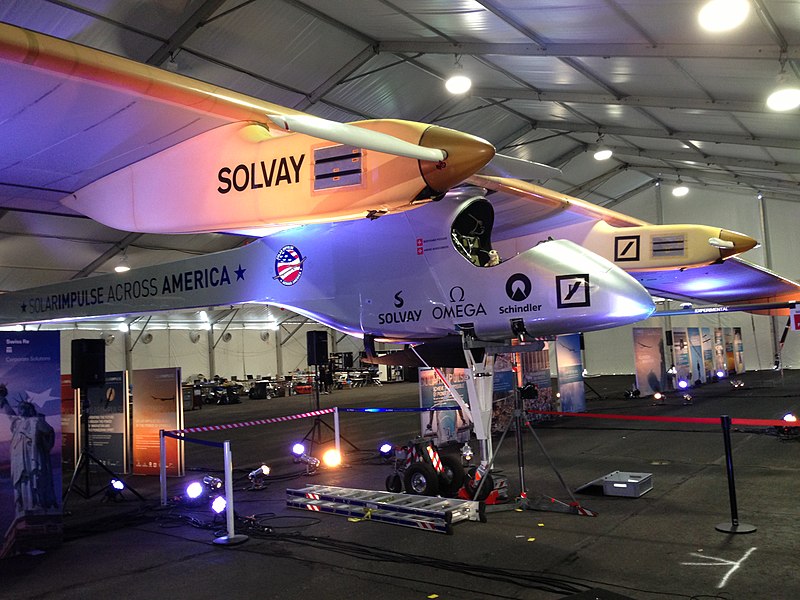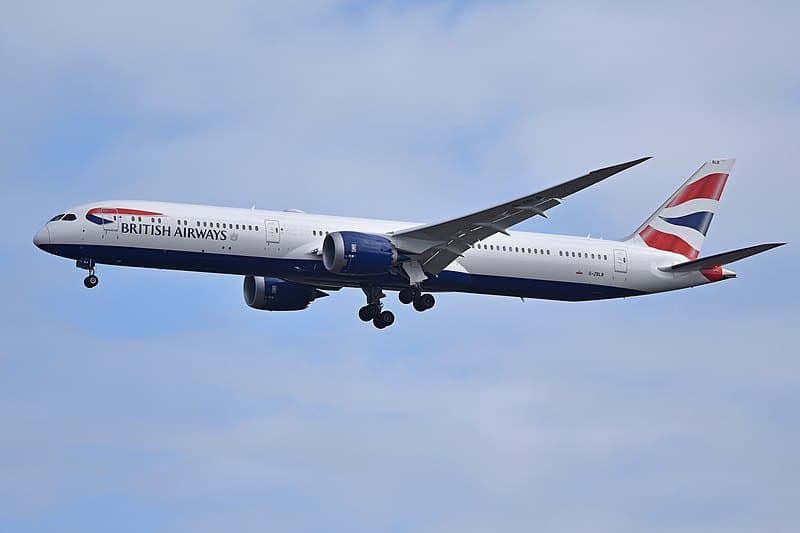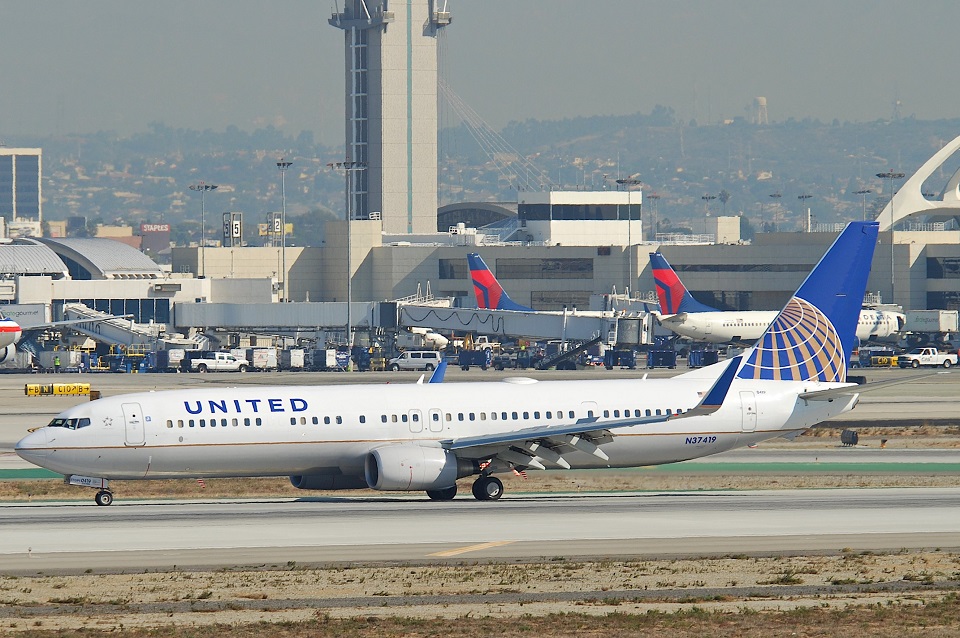Aviation
10 things you must know about Solar Impulse 2

1. Flying Capacity : Solar Impulse is the only airplane of perpetual endurance, able to fly day and night on solar power, without a drop of fuel. Solar Impulse 2 will climb to 8,500 meters (5.28 miles) during the day, where it can reach its maximum speed and store more solar energy for the night. As dusk arrives, the plane will descend to an altitude of 1,500 meters (0.9 miles) where its speed slows and it’s easier to remain aloft.
2. Size : This revolutionary single-seater aircraft made of carbon fiber has a 72 meter wingspan (larger than that of the Boeing 747-8I) for a weight of just 2,300 Kg, equivalent to that of a car.
Structure : build the entire structure proportionately 10 times lighter than that of the best glider. Every gram added had to be deducted somewhere else, to make room for enough batteries on board, and provide a cockpit in which a pilot can live for a week. In the end, it is of the weight of a small van: 2’300kg!
3. Battery : The 17,000 solar cells built into the wing supply four electric motors (17.5 CV each) with renewable energy.During the day, the solar cells recharge lithium batteries weighing 633 Kg (2077 lbs.) which allow the aircraft to fly at night and therefore to have virtually unlimited autonomy
4. Motors : Four brushless, sensorless motors, each generating 17.4 hp (13.5 k), mounted below the wings, and fitted with a reduction gear limiting the rotation speed of a 4 m diameter, two-bladed propeller to 525 rev / min. The entire system is 94% efficient, setting a record for energy efficiency
5. Speed : Solar Impulse can fly at the same speed than a car, between 36 km/h (20 Kts) and 140 km/h (77 Kts).
(At sea level: minimum speed of 45 km/h (20 Kts) and maximum speed of 90 km/h (49 Kts). At maximum altitude: from 57 km/h (31,5 Kts) to 140 km/h (77 Kts).)

6. Robustness :
The upper wing surface is covered by a skin consisting of encapsulated solar cells, and the lower surface by a high-strength, flexible skin. 140 carbon-fiber ribs spaced at 50 cm intervals give the wing its aerodynamic cross-section, and also maintain its rigidity.
7. Simulation Training :
long-duration round-the-world flights by training them on virtual missions in the flight simulator. The idea is to test their ability to endure three days and nights alone in a cockpit of less than 9ft x 5ft x 3ft at an altitude between 3,000ft and 27,000ft. André Borschberg came through the first 72-hour simulation in 2012 with flying colors.
8.World Record
Solar Impulse with Bertrand Piccard, broke the world records of distance and duration for solar aviation, as well as the world record for the longest solo flight ever (117 hours and 52 minutes — around 7,200 km, 4,474 miles).
- Flight time: 117:52 hours\
- Maximum altitude: 8,634 m (28,000 ft)
- Average speed: 61.19 km/h, 38 mi/hr
- Flight plan distance: 7,212 km, 4,481 mi
9. Solar Impulse 2 Project Plan:
- 12 years of feasibility study, concept, design and construction
- 50 engineers and technicians
- 80 technological partners
- more than 100 advisers and suppliers
- 1 prototype (Solar Impulse 1, registered as HB-SIA)
- 1 final airplane
(Solar Impulse 2, registered as HB-SIB)

10. Pilot food & Exercise:
The pilot’s daily intake is 2.4 kg (5.2 lbs) of food, 2.5 liter (84.5 oz, 0.66 US gallon, almost 3 US quarts) of water, and 1 liter (33.8 oz, 0.26 US gallon, 1 US quart) of sports drink per day. His meals include a breakfast, a lunch prepared to be as similar as possible to homemade meals, and snacks including dried fruits and chocolate.During a typical 24-hour flight cycle, the pilot rests 8 times, averaging between 5 and 20 minutes per session. Borschberg also performed yoga 30 to 45 minutes a day to stay fit and prevent any potential negative effects of immobility.
You wanna like to meet the Si2 team? click here
liked it ..! ?
Share with your friends and families

Aviation
Air India’s B747 Makes Its Final Journey, Waving Farewell to Fans

In a poignant moment marking the end of an era in aviation history, Air India’s iconic Boeing 747 aircraft, affectionately known as the ‘Queen of the Skies,’ embarked on its ultimate journey from Mumbai’s international airport.
The departure, bound for Plainfield, USA, where it will undergo dismantling and part-stripping under the ownership of American AerSale, signals the closure of a storied chapter for the airline.
Once revered for transporting dignitaries ranging from prime ministers to presidents, the Boeing 747 has etched itself into aviation lore. Yet, as airlines worldwide pivot towards more contemporary and cost-effective aircraft, Air India’s decision to bid farewell to its remaining Boeing 747s reflects the pragmatic realities of today’s aviation landscape.
The sale of these majestic planes to AerSale represents a strategic move by Tata Group, Air India’s new custodian, towards optimizing operational efficiency and embracing modern industry standards. Out of the four aircraft sold, two will be repurposed into freighters, while the remaining pair will be meticulously disassembled to salvage valuable components.
The final flight from Mumbai witnessed a touching tribute as pilots performed a traditional ‘Wing Wave,’ symbolizing the conclusion of the Boeing 747‘s distinguished service with Air India. This poignant gesture encapsulates the deep sentiment attached to the aircraft’s departure and its significant contribution to the airline’s legacy.
As the Boeing 747 embarks on its journey to Plainfield, USA, nostalgia permeates the air, evoking memories of its maiden flight on March 22, 1971. Over five decades, Air India operated a total of 25 Boeing 747s, each leaving an indelible mark on the annals of aviation history.
Middle East
British Airways Resumes Daily Flights to Abu Dhabi, After 4-Year hiatus

British Airways made its way back to Abu Dhabi, landing at Zayed International Airport. Following a four-year break in service, both crew and passengers were greeted with enthusiasm.
In the summer of 2024, British Airways plans to launch a daily route, utilising a Boeing 787-9, from London Heathrow to Abu Dhabi. The new route enhances ties between the UAE and the UK and expands vast worldwide network, catering to passengers who may be visiting friends and family or travelling for business.
Arriving in Abu Dhabi at 08.30+1, flight BA073 to Abu Dhabi leaves London Heathrow at 22.25. Departing at 10.10 and landing at London Heathrow at 15.20 is the inbound flight (BA072).
The chief executive officer and managing director of Abu Dhabi Airports, Elena Sorlini, stated: “We are delighted to welcome British Airways to Zayed International Airport. Their daily schedule is expected to improve connectivity and stimulate travel and business.” Visitors may experience the dynamic capital of the United Arab Emirates like never before at our brand-new, award-winning, state-of-the-art terminal, where they will be welcomed with the best kind of Emirati hospitality.”
Flight schedule:
| London Heathrow (LHR) to Zayed International (AUH)All times are local | ||||||
| Season | Flight number | Departing LHR | Arriving AUH | Flight number | Departing AUH | Arriving LHR |
| Summer ‘24 | BA73 | 22:25 | 08:30+1 | BA72 | 10:10 | 15:20 |
| Winter ‘24 | BA73 | 22:25 | 09:30+1 | BA72 | 11:10 | 15:20 |
Aviation
FAA investigation: Passenger seated in Captain’s seat inside cockpit at cruising altitude

A viral video capturing a startling moment aboard a United Airlines charter flight from Denver to Toronto has triggered a federal investigation.
The footage, initially shared on social media by Hensley Meulens, the hitting coach for the Colorado Rockies baseball team, depicts a member of the coaching staff seated in one of the pilot seats while the aircraft was in mid-flight.
In his caption, Meulens expressed gratitude to the captain and first officer for allowing him this unusual experience. The video, filmed by another passenger, reveals the cockpit door open, and at one point, a third passenger briefly enters the flight deck. Alarmingly, during this time, the captain was absent from the cockpit.
Despite the flight being a private charter operated by United Airlines, company and Federal Aviation Administration (FAA) regulations strictly prohibit passengers from entering the cockpit during flight or leaving the flight deck unsecured.
United Airlines swiftly responded, expressing deep concern over the incident. A spokesperson emphasized that the video depicted an unauthorized person in the flight deck at cruising altitude with the autopilot engaged, constituting a clear violation of safety and operational policies.
The FAA confirmed that it is actively investigating the incident, highlighting that unauthorized access to the flight deck during flight is a violation of federal regulations. The agency assured that it is taking the matter seriously and will conduct a thorough examination to ensure compliance with aviation safety standards.






















